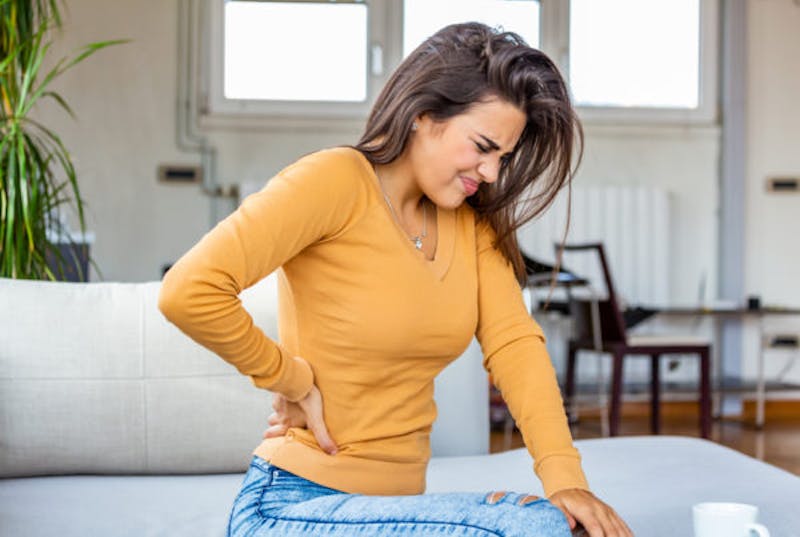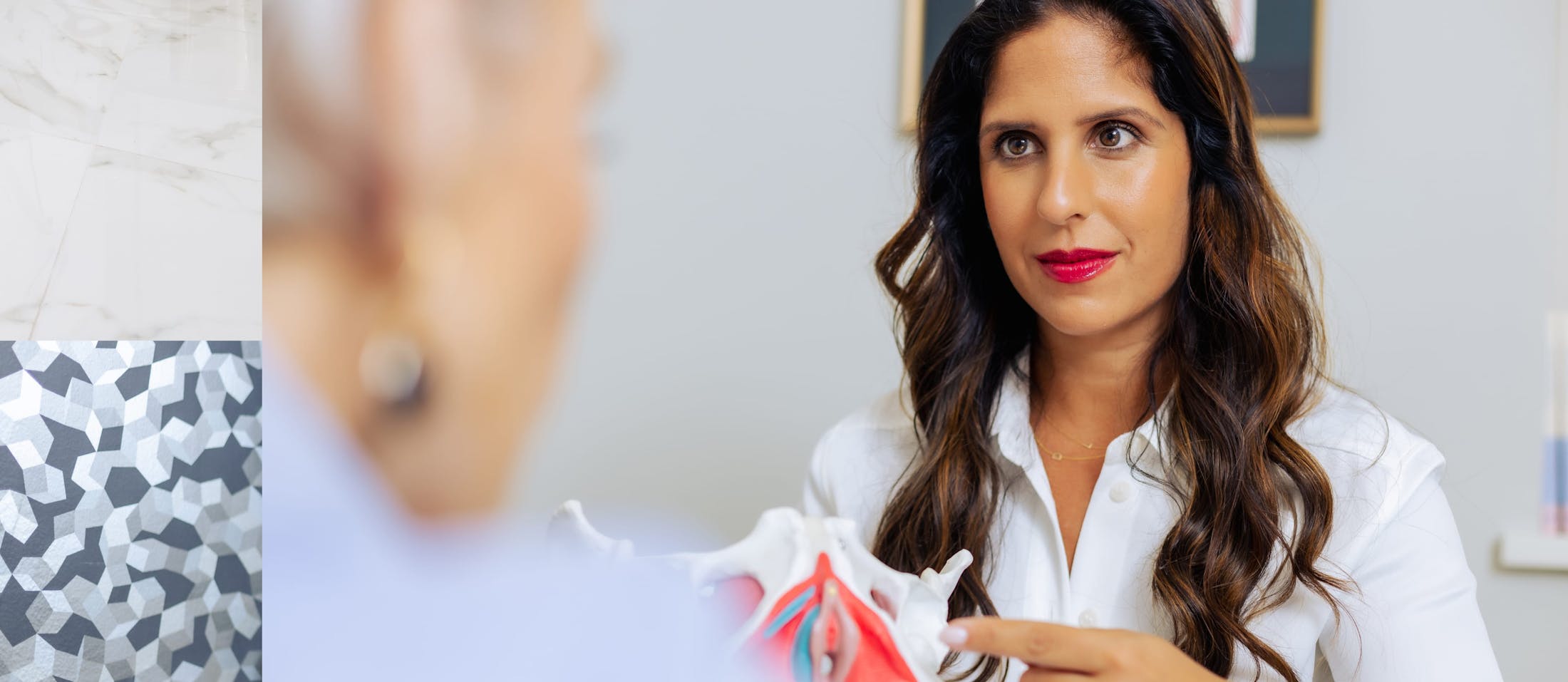
Most women will experience discomfort during their period at some point in their lives. Mild symptoms like cramping, low back pain or tender breasts are totally normal and nothing to be concerned about. But many people suffer from extremely painful periods, with intense cramping and back pain that lasts for days. For them, the “time of the month” is a source of severe, debilitating period pain that interferes with their daily lives.
Severe period pain is also known as “dysmenorrhea.” Depending on what’s causing your period pain, you may have primary dysmenorrhea or secondary dysmenorrhea. Unfortunately, women who experience dysmenorrhea often suffer in silence, accepting their pain as a normal part of life. At Pelvic Pain Doc, we believe everyone can find relief from pelvic pain — especially painful periods. Here’s how to know if you have dysmenorrhea and how New York’s pelvic pain specialist can help you find relief.
What Causes Extremely Painful Periods?
Period pain is most commonly associated with a chemical called prostaglandins. Produced in the lining of the uterus, prostaglandins contribute to the contraction of the uterus during menstruation. Levels of prostaglandins are highest during the first few days of your menstrual cycle and pain typically lessens as bleeding slows down.
There are two types of dysmenorrhea: primary and secondary. The difference comes down to what is causing your period pain. Primary dysmenorrhea refers to any pain associated with menstruation, typically as a result of too many prostaglandins. Symptoms of primary dysmenorrhea can appear 1-2 days before your period starts and continue for 2-4 days. Symptoms include:
Severe cramping of the uterusExtreme low back painBladder painDiarrhea or constipationPain so extreme you cannot participate in regular activities
If your period pain is caused by an underlying condition, it is referred to as secondary dysmenorrhea. This type of period pain is the result of a disorder in the reproductive system. The pain secondary dysmenorrhea causes is often more severe and lasts longer than pain from primary dysmenorrhea. Some of the conditions that can cause secondary dysmenorrhea are:
Endometriosis: Endometriosis occurs when uterine cells, called the endometrium, grow outside of the uterus on other organs, such as the ovaries, fallopian tubes or bladder. This displaced tissue continues to function as though it were inside the uterus, thickening, breaking down and shedding with each cycle. Endometriosis can cause extremely painful periods and an increase in PMS symptoms. Adenomyosis: This condition occurs when tissues that usually lines the uterus begins to grow in the muscular wall of the uterus. Uterine fibroids: Uterine fibroids are non-cancerous tumors that can grow in and on the uterus, causing abdominal pain, pressure, constipation and heavy, painful periods. Many people with uterine fibroids won’t notice any symptoms at all.
How to Treat Severe Period Pain
Living with painful periods can be extremely stressful, not only because of the intense discomfort it causes, but because it can interfere with how you live your life. Because of the severe physical symptoms, many people are unable to go to work or participate in their regular activities, which can ultimately lead to emotional distress. Fortunately, there are many things you can do to relieve period pain, both at home and by working with a pelvic pain specialist.
At-home treatment for period pain is a great place to start for primary dysmenorrhea. Applying heat can help to alleviate cramping — whether it’s using a heating pad or hot water bottle on your lower abdomen, or taking a hot bath or sauna. Exercise can also relieve period pain because it helps to relax the muscles of the uterus. Relaxation techniques such as yoga or meditation can help to calm both your reproductive system and your mind.
These DIY remedies for period pain are often not enough to relieve discomfort. If you’ve tried heat, exercise and relaxation methods and haven’t found relief, over-the-counter medications can help. In addition to relieving period pain, nonsteroidal anti-inflammatory drugs (NSAIDs), such as ibuprofen and naproxen, also reduce the amount of prostaglandins that your uterus produces. Less prostaglandins means less cramping and less pain.
You can also use hormonal treatments to reduce period pain. The hormones in birth control pills, as well as other hormonal treatments (such as IUDs), thin the lining of the uterus which reduces blood flow and cramping. These treatments can also eliminate your period altogether, which can also help to reduce your pain.
When Should I See a Doctor for Period Pain?
In many cases, period pain is just an unfortunate part of the menstrual cycle. But that doesn’t mean you have to suffer through it in silence. At Pelvic Pain Doc, we believe that everyone deserves to live their life free from pain. If you’re experiencing any kind of pain, we always encourage you to seek professional help. Even if your pain is completely normal, a pelvic pain specialist can work with you to develop pain management techniques.
In other cases, though, period pain is a sign of a bigger concern and medical attention is necessary. You should see a pelvic pain specialist if:
Self-care treatments and NSAIDs don’t reduce your painYour pain interferes with your lifeYour cramps increaseYour period pain is accompanied by a feverYou experience pain even when you aren’t getting your periodYou have severe cramps for the first time after 25 years of age
Even though mild period cramping is accepted as a normal part of life, extreme period pain is your body’s way of trying to tell you something is wrong. Are you ready to start listening? Call Pelvic Pain Doc to book a consultation today.

